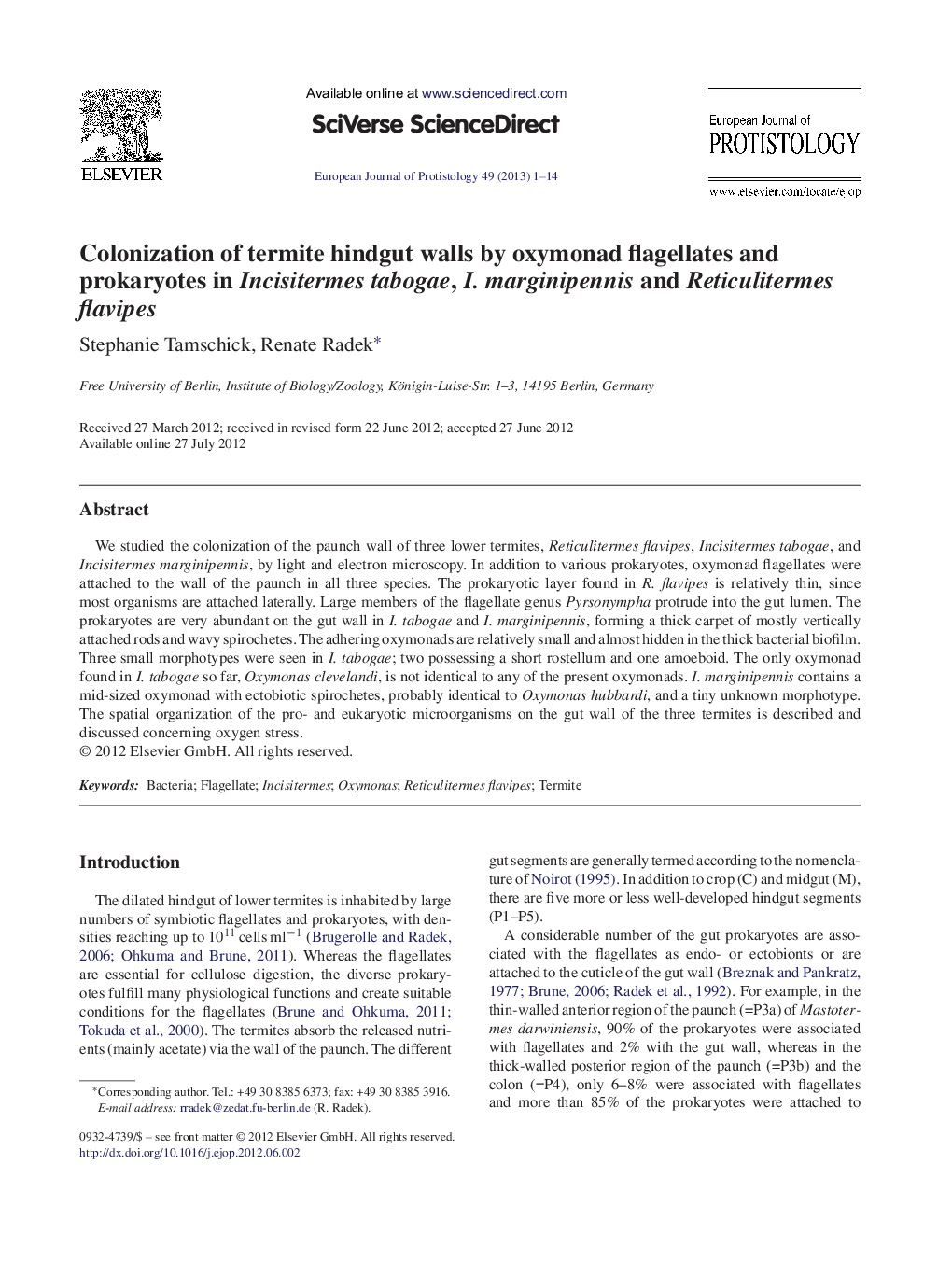| Article ID | Journal | Published Year | Pages | File Type |
|---|---|---|---|---|
| 2047060 | European Journal of Protistology | 2013 | 14 Pages |
We studied the colonization of the paunch wall of three lower termites, Reticulitermes flavipes, Incisitermes tabogae, and Incisitermes marginipennis, by light and electron microscopy. In addition to various prokaryotes, oxymonad flagellates were attached to the wall of the paunch in all three species. The prokaryotic layer found in R. flavipes is relatively thin, since most organisms are attached laterally. Large members of the flagellate genus Pyrsonympha protrude into the gut lumen. The prokaryotes are very abundant on the gut wall in I. tabogae and I. marginipennis, forming a thick carpet of mostly vertically attached rods and wavy spirochetes. The adhering oxymonads are relatively small and almost hidden in the thick bacterial biofilm. Three small morphotypes were seen in I. tabogae; two possessing a short rostellum and one amoeboid. The only oxymonad found in I. tabogae so far, Oxymonas clevelandi, is not identical to any of the present oxymonads. I. marginipennis contains a mid-sized oxymonad with ectobiotic spirochetes, probably identical to Oxymonas hubbardi, and a tiny unknown morphotype. The spatial organization of the pro- and eukaryotic microorganisms on the gut wall of the three termites is described and discussed concerning oxygen stress.
